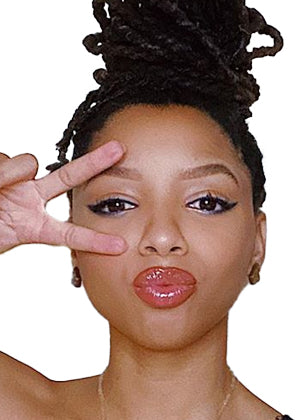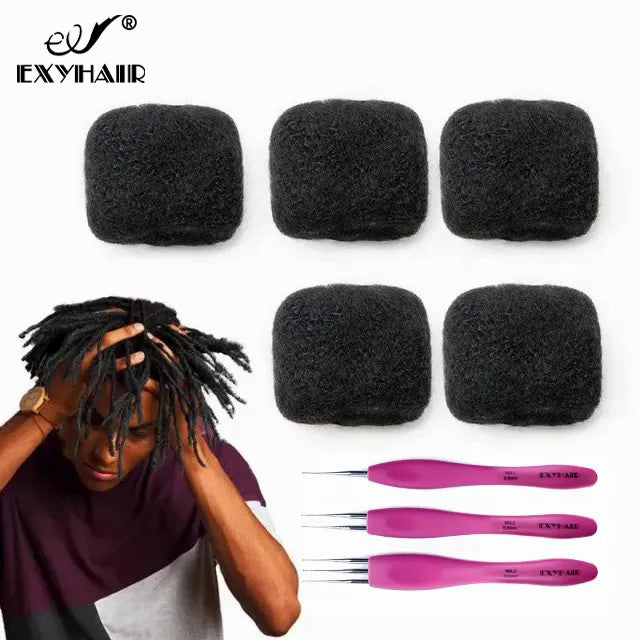History and Evolution of Afro Kinky Bulk Hair and Locs Worldwide

Introduction: Why Afro Kinky Hair and Locs Matter
Afro kinky bulk human hair is not simply an extension material—it is a living expression of history, culture, and identity. For centuries, kinky hair and locs have carried spiritual and social significance, serving as markers of ancestry, community, and resistance. Today, locs and natural styles are embraced worldwide as both protective hairstyles and cultural statements, celebrated on runways, in films, and across digital platforms.
This article traces the history and evolution of Afro kinky bulk hair and locs worldwide—from their African roots to their global recognition. Along the way, we will also explore how loc extensions and Afro kinky bulk hair have made these styles accessible to more people, while offering practical tips for care and longevity.
1. Ancient African Roots of Locs and Kinky Hair
1.1 Hair as Identity in African Civilizations
In Africa, hair was never “just hair.” It was a cultural marker that communicated age, tribe, marital status, and even spirituality. For example:
West African tribes: Hair braiding patterns indicated community ties, often passed down through generations.
Zulu people of South Africa: Hairstyles were used to show readiness for marriage or warrior status.
Himba people of Namibia: Known for their red ochre-coated dreadlocks, a combination of hair, butter, and clay that reflects tradition and environmental adaptation.
1.2 Ancient Egypt and Loc Symbolism
Archaeological evidence suggests that ancient Egyptians wore locs, as seen in mummies with preserved hair and tomb sculptures. Locs were associated with divine connection, especially among priests. Pharaohs and nobility often styled their hair in intricate braided or locked designs to represent power and sacred duty.
1.3 Ethiopia and the Horn of Africa
In Ethiopia, locs and natural styles were linked with spiritual devotion. For example, holy men and warriors often grew their hair long and locked as a symbol of strength and protection. This tradition later influenced Rastafarian beliefs in the Caribbean.
2. The Impact of the Transatlantic Slave Trade
The forced migration of Africans during the slave trade disrupted traditional hair practices. Enslaved people were often forced to shave their heads, stripping them of cultural identity. Despite this, traditions survived.
Hidden practices: Enslaved Africans braided seeds and rice into their hair as a way of carrying life from one continent to another.
Emerging resistance: Over time, natural hair became an act of resistance against colonial and Eurocentric standards.
3. Locs in the Caribbean: Spiritual and Political Rebirth
3.1 Rastafarian Movement in Jamaica
In the 1930s, the Rastafari movement emerged, influenced by Ethiopian Emperor Haile Selassie. Locs became a spiritual vow, representing the Lion of Judah and rejection of Western norms. Bob Marley later brought dreadlocks to global attention, symbolizing freedom, spirituality, and unity.
3.2 Beyond Rastafari
In Trinidad, Grenada, and other Caribbean nations, locs also became tied to cultural pride. Carnival celebrations and calypso music featured natural hairstyles as part of identity and resistance.
4. Locs in the United States: From Resistance to Recognition
4.1 Civil Rights Era and Black Power Movement
During the 1960s–70s, activists like Angela Davis promoted natural hair as a symbol of Black pride. Wearing an Afro or locs was a direct rejection of assimilation. Locs symbolized strength and defiance against systemic oppression.
4.2 Hip-Hop and Popular Culture
By the 1990s, hip-hop artists embraced locs and braids as a representation of authenticity and urban identity. Artists such as Lauryn Hill, Busta Rhymes, and Lil Wayne made locs fashionable and mainstream.
5. Global Spread of Locs and Afro Kinky Styles
5.1 Europe
Locs gained popularity in London, Paris, and Amsterdam, influenced by Caribbean immigrant communities and reggae culture. Today, they are worn by both Afro-descendant and non-Black individuals, sparking ongoing debates on cultural appreciation vs appropriation.
5.2 Asia
In Japan, locs became part of reggae and hip-hop-inspired street fashion. In South Korea and China, stylists began offering loc services with Afro kinky bulk human hair, making the style accessible to those without naturally coiled textures.
5.3 Africa Reclaiming Locs
Ironically, colonization had stigmatized natural African hairstyles for decades. But modern African youth are reclaiming locs as symbols of cultural pride, from Lagos to Nairobi to Johannesburg.
6. Afro Kinky Bulk Hair: The Engine of Modern Loc Extensions
6.1 Definition and Use
Afro kinky bulk hair refers to unwefted, tightly coiled human hair used for:
Extending locs
Twisting and braiding
Crochet styles
6.2 Why It Matters
Provides natural texture for authentic-looking locs.
Gives versatility for protective styling.
Allows people with different hair types to wear locs.
6.3 Loc Extensions with Afro Kinky Bulk Hair
Many people choose to install loc extensions with Afro kinky bulk hair to skip the years-long waiting period for natural loc growth. This method offers instant length and fullness while looking natural.
7. Modern Fashion, Media, and Social Media Influence
7.1 Runway and Hollywood
Celebrities like Zendaya, Chloe and Halle Bailey, and Ava DuVernay have proudly worn locs on red carpets, challenging stereotypes.
7.2 Instagram and TikTok
Hashtags like #locjourney and #afrokinkybulk showcase tutorials, transformations, and care routines. Influencers often demonstrate how to start locs with Afro kinky bulk human hair or maintain natural textures with minimal chemicals.
8. Controversies and Challenges
8.1 Workplace and School Discrimination
Many professionals and students have been penalized for wearing locs. The CROWN Act (Creating a Respectful and Open World for Natural Hair) in the U.S. seeks to prevent discrimination against natural styles.
8.2 Cultural Appropriation Debate
Some criticize non-Black individuals for wearing locs without understanding their cultural significance. Others argue hairstyles can cross cultural boundaries if approached respectfully.
9. Detailed Guide to Loc and Afro Kinky Hair Care
9.1 Starting Locs with Afro Kinky Bulk Hair
Section hair into parts.
Wrap Afro kinky bulk hair around natural strands.
Palm roll or twist to form locs.
Secure and maintain with lightweight gel.
9.2 Maintenance
Wash every 2–3 weeks with residue-free shampoo.
Moisturize with oils (coconut, jojoba, castor).
Retwist roots every 4–6 weeks.
Cover with silk/satin scarf at night.
9.3 Protective Styling Options
Twists: Marley or Senegalese twists for low manipulation.
Braids: Havana braids using bulk hair for thickness.
Crochet: Quick, versatile installations.
10. Expanded FAQ (SEO-rich)
Q1: How long does it take to grow natural locs?
A: It can take 2–5 years for mature locs, but extensions with Afro kinky bulk hair provide instant results.
Q2: Do loc extensions damage natural hair?
A: No, if installed and maintained properly, they protect natural hair.
Q3: Can I swim with loc extensions?
A: Yes, but wash and dry thoroughly afterward to prevent buildup.
Q4: How long do Afro kinky bulk loc extensions last?
A: With proper care, 12–24 months.
Q5: Can straight hair hold locs?
A: Yes, by using Afro kinky bulk hair for extensions.
Q6: What products should I avoid?
A: Heavy waxes and thick gels that cause buildup.
Q7: Are locs professional in corporate settings?
A: Increasingly yes, especially with legal protections like the CROWN Act.
Q8: Can locs be styled formally?
A: Absolutely—locs can be worn in buns, updos, or braided crowns.
Q9: What’s the difference between dreadlocks and locs?
A: “Locs” is the preferred term within the community, while “dreadlocks” carries colonial stigma.
Q10: Is Afro kinky bulk hair always human hair?
A: High-quality versions are 100% human hair (like those from Exyhair), but synthetic alternatives also exist.
11. The Future of Locs and Afro Kinky Bulk Hair
As natural hair movements continue to grow, locs are becoming symbols of pride and empowerment rather than marginalization. With global appreciation rising, Afro kinky bulk hair will remain central in making authentic locs and protective styles accessible to all.
Conclusion: A Crown of Heritage and Identity
The story of Afro kinky bulk hair and locs is one of resilience, cultural pride, and transformation. From African roots to global recognition, these hairstyles have carried history and identity across centuries and continents. Whether you are starting your loc journey or extending your natural crown with Afro kinky bulk human hair, you are participating in a tradition that is rich, powerful, and timeless.
At Exyhair, we are committed to supporting this journey with premium Afro kinky bulk human hair designed for loc extensions, twists, braids, and protective styling. Our mission is to help you wear your heritage with pride, authenticity, and beauty.



















